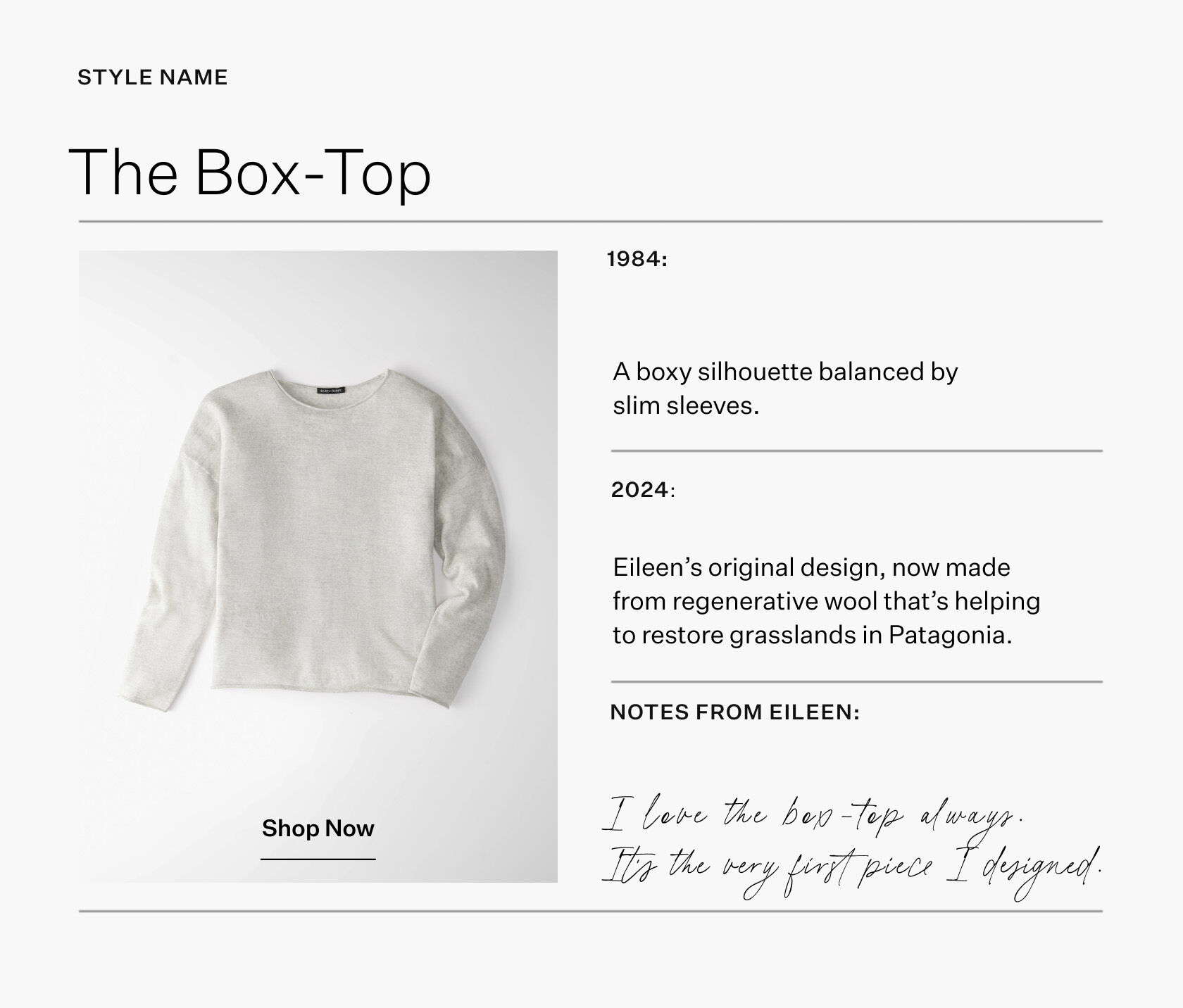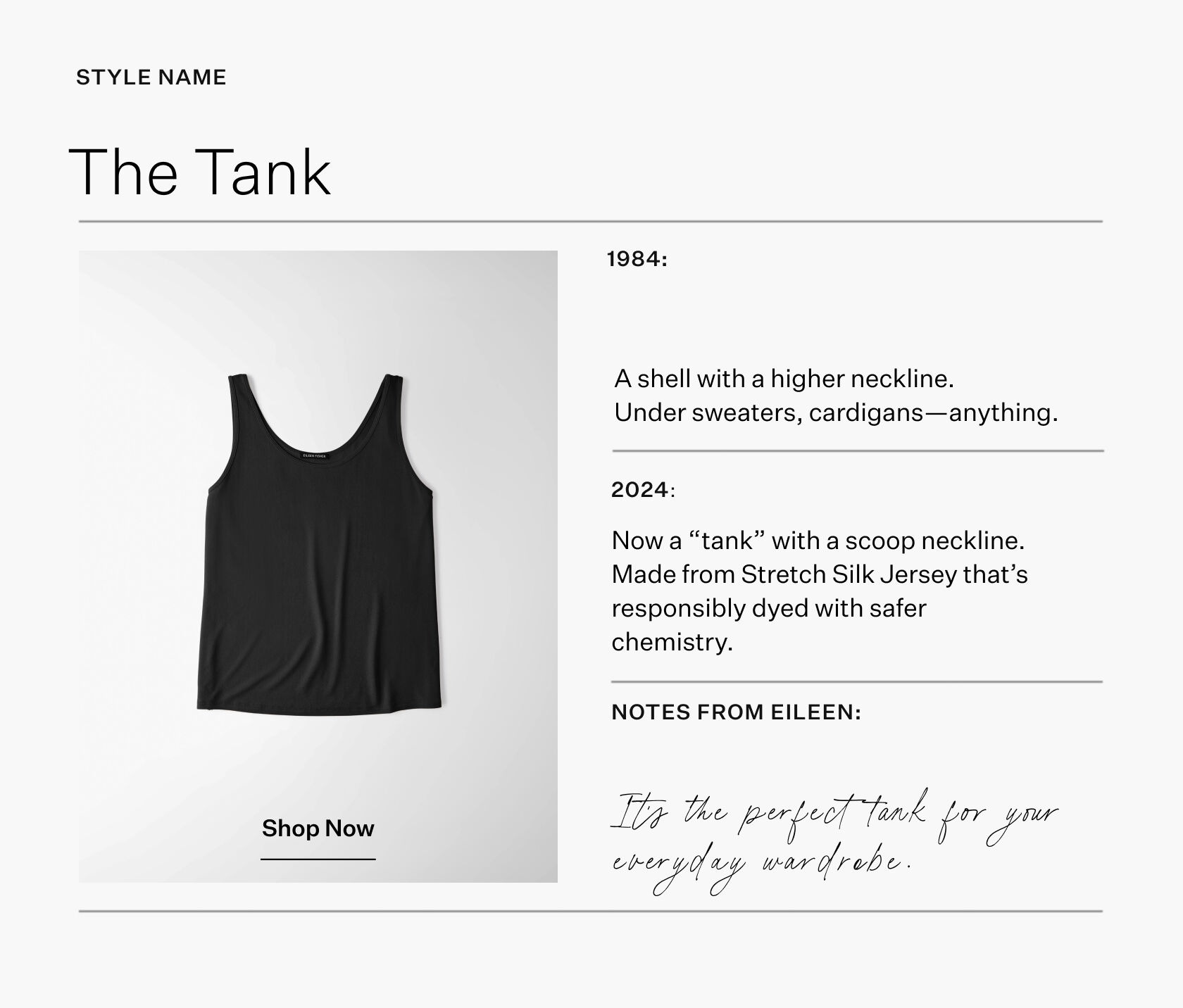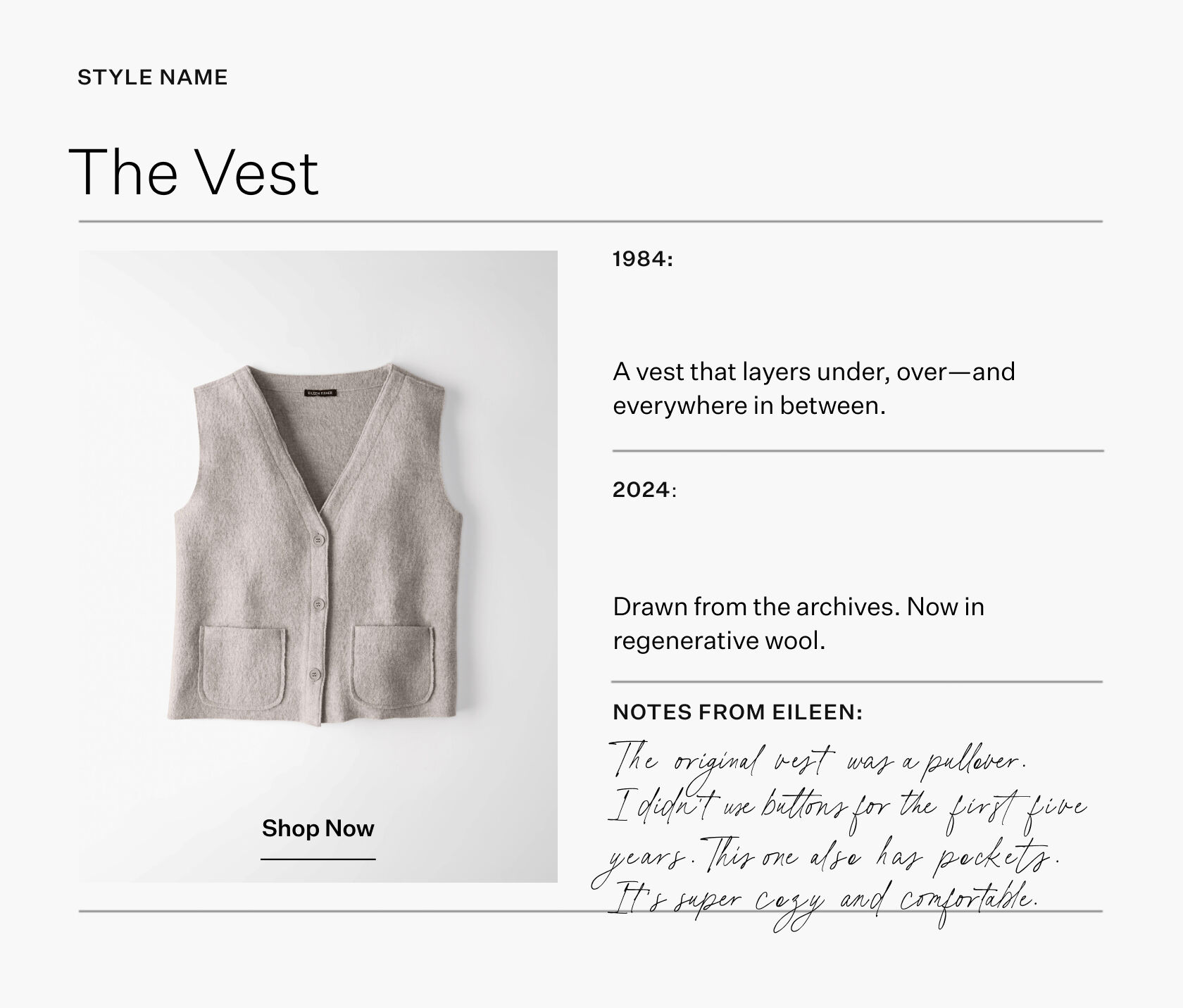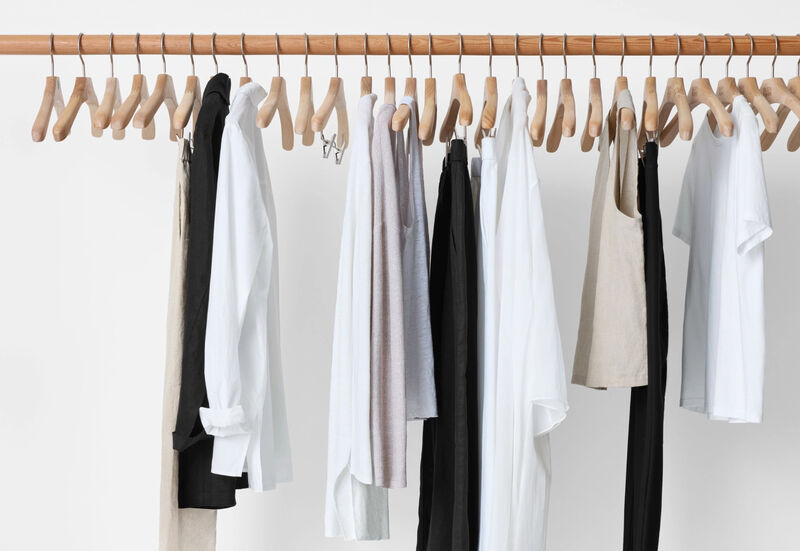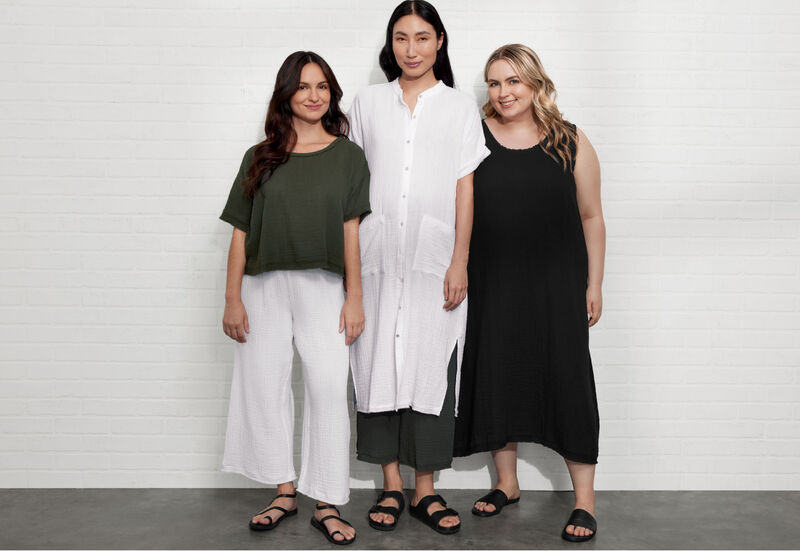Reflecting the Future Since 1984
After forty years of perfecting a simple wardrobe, we’re using what we’ve learned to design a more sustainable tomorrow.
Looking Back
In 1984, Eileen started her company to solve a problem: She was having trouble getting dressed. At the time, she worked as an interior and graphic designer, and in her mind kept seeing simple shapes for clothes. She came up with four pieces: a box-top, a cropped pant, a shell and a vest. For Eileen, it was an aha moment: the system of dressing she’d been looking for since she wore a school uniform as a child. “There was an excitement about the clothes,” she says. “I could feel that I was onto something.”
The line has since grown and evolved, but variations on Eileen’s first four pieces have appeared and reappeared over the decades. The root shapes remain the same, but with updates that feel modern—a seasonal fabric, a longer proportion or a new neckline. There’s a high bar to make even minor changes to a shape from our archives. But the result: a subtly shifting system of dressing that offers options, works in the moment and has proven its endurance over time.
Eileen was inspired by traditional Japanese dress, particularly the kimono. “I was fascinated by the idea that one design, one shape, could transcend time.” She wondered what it would mean to make something that never went out of style—and in 1989 created an iconic coat with clean lines that we’re still celebrating thirty-five years later. Of the current version, she says, “We spent a lot of time getting it perfect. I love this coat.”
Changing the Way Clothes Are Made
As the company grew under Eileen’s leadership, we embraced the idea that business can be a force for positive change in the world. As a result, we’ve doubled down on making clothes responsibly, sourcing materials in ways that consider the well-being of people and the planet.
- In 2004, we launched our first organic cotton collection, and in 2014 doubled our efforts to source organic fibers.
- In 2006, we began working with an alternative supply chain in Arequipa, Peru, made up of community-based workshops that follow a fair-trade model.
- In 2009, we began collecting our own used clothes to keep them out of landfills. We’ve since collected over two million garments through our Renew take-back program.
- In 2012, we partnered with bluesign® to introduce responsibly dyed silk—a first for the fashion industry.
- In 2015, we became a certified B Corp: a for-profit business that voluntarily meets high standards of social and environmental performance and is assessed every three years.
- In 2017, we introduced responsible wool, a fiber that supports farmers who meet better practices for animal welfare and land management.
- In 2018, we took it one step further with regenerative wool, a fiber that’s helping to restore soil health and biodiversity in Patagonia.
- In 2019, we introduced products made with recycled post-consumer waste from EILEEN FISHER garments blended with other materials. Growing our fiber-to-fiber recycling program is part of an ongoing commitment to circular design.
- In 2023, we introduced Regenerative Organic Certified® cotton, a fiber that supports soil health, biodiversity and farm worker fairness in Peru.
- As of 2024, with our support, three of our factories have joined the Fair Trade USA program. Our aim is to support more of our factories in achieving certification so that workers can implement community development projects with the funds we provide.
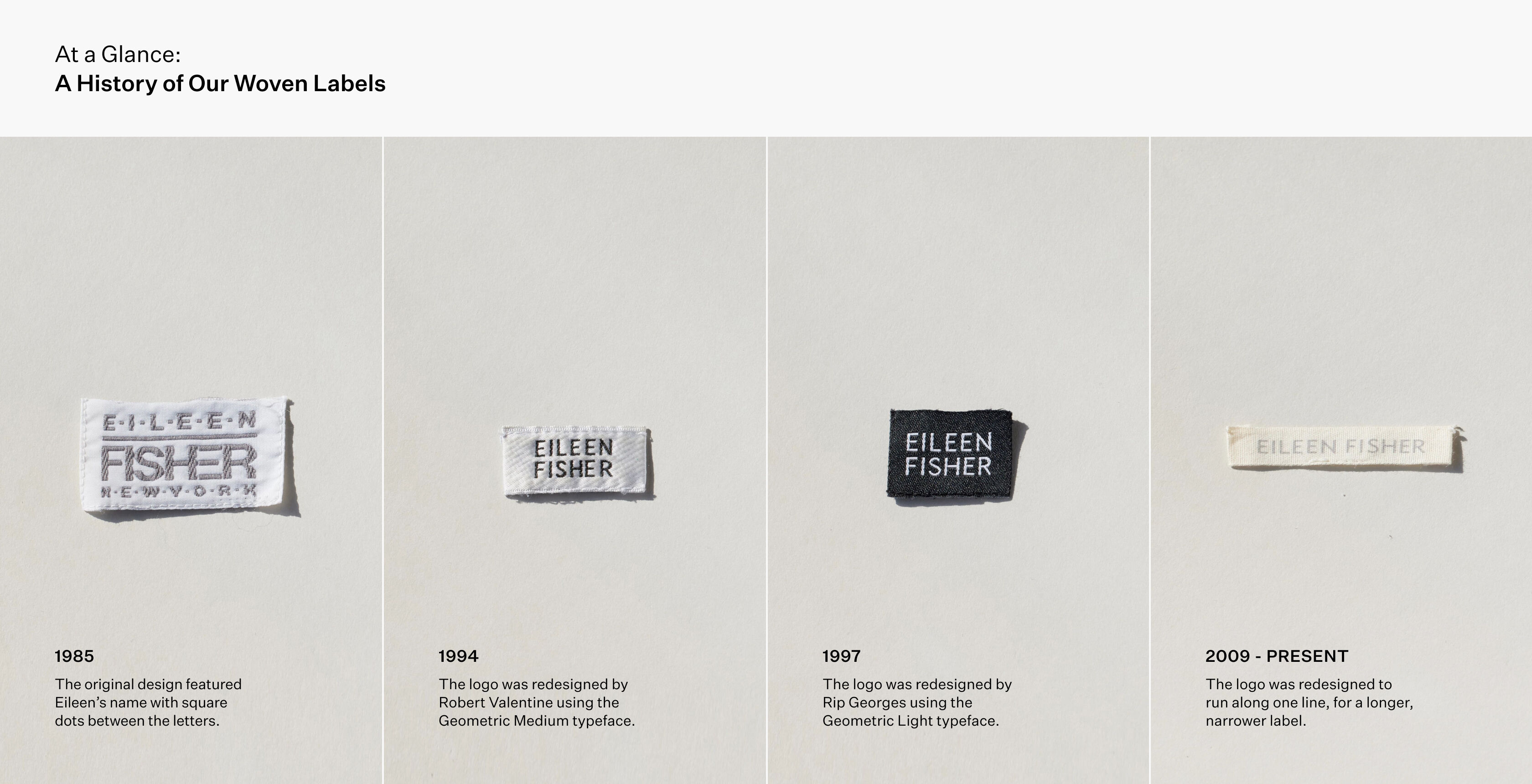
Moving Forward
Over the last twenty years, we’ve been focused on sourcing organically grown fibers—they're better for workers and wildlife—and have successfully converted most of our conventional cotton and linen. But we’ve come to believe that it’s no longer enough to simply do less harm. We want to actively make things better. That's why regenerative agriculture is now our North Star. Our regenerative wool and organic cotton fibers are grown with holistic farming practices that help restore soil health and biodiversity.
Making clothes better matters, but so does making better clothes. That means designing pieces that can be worn for as long as possible. Because to meaningfully reduce our impact, we need to make thoughtful choices about what we put out into the world and why. Each style should serve a purpose in the wearer’s life—and together, they must make building an intentional wardrobe easy. To do this, we’re doubling down on Eileen’s original vision.
Our line has been a system since the beginning, first represented by four shapes, then later by eight pieces known as The System. We’re now focused on making sure the whole line works this way, from the center out. For Spring, we’re designing The Foundation, a core selection of shapes that we see as the building blocks for a simple wardrobe. This means we scrutinize the pieces as individual designs, but also in context of the greater whole.
“The simpler the shape, the more ways to wear it.”

So how do we decide which shapes are the most crucial to getting dressed? As Ellie Thoren, Director of How to Wear, explains: “It’s like an orchestra. We know what pieces need to be there. But what’s the oboe doing for the symphony as a whole?” As much an art as it is a science, the process hasn’t been easy to formalize. “We look at the purpose of an individual style, but always in relation to the other pieces,” she says.
Over the years, we’ve adapted our system to meet the times, but never to follow trends. (Does Beethoven need autotune?) As we move forward, we’re drawing on forty years of design experience to create a roadmap for the future. That means referencing our own history in a way that we always did, but with even more clarity about our shapes—and the beauty of our system. “We still have a chance to make it better,” says Ellie. “We’re not done yet.”
